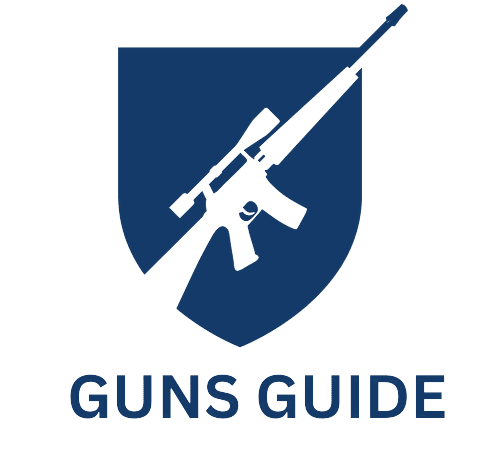The Remington Model 11-48 is a popular, semi-automatic shotgun that has been around for decades, known for its reliability and ease of use. However, like any firearm, it is not without its share of problems. To ensure that your Remington 11-48 functions optimally and to prolong its life, it is crucial to understand and address these issues. In this blog post, we will discuss the common problems that arise with the Remington 11-48, along with their solutions and fixes. By the end of this post, you will have a comprehensive understanding of what to be aware of and how to keep your shotgun running smoothly.
Problem 1: Cycling Issues
One of the most common problems experienced with the Remington 11-48 is cycling issues. These can be caused by various factors, including a dirty chamber, worn-out parts, or improper ammunition.
Solution: Cleaning and Maintenance
To resolve cycling issues, first, ensure that your shotgun is thoroughly cleaned and maintained. This includes removing any dirt, grime, or rust from the chamber and inspecting the action for any signs of wear or damage. Replace any parts that appear worn or damaged. Next, lubricate moving parts to ensure smooth cycling.
Solution: Proper Ammunition
Using the correct ammunition for your Remington 11-48 is crucial to ensuring proper cycling. Always use high-quality ammunition that corresponds to the specifications of your shotgun. Low-quality or mismatched ammunition can cause cycling issues and even damage your firearm.
Problem 2: Extraction Issues
Another common issue with the Remington 11-48 is extraction issues. These occur when the fired shell casing is not properly ejected from the shotgun. This can be caused by a dirty chamber, weak extractor spring, or a damaged extractor.
Solution: Cleaning and Inspection
First and foremost, ensure that the chamber of your shotgun is clean and free of any debris. Dirt and grime in the chamber can make it difficult for the extractor to grab the fired shell properly, causing it to remain in the chamber after firing. Next, inspect the extractor for damage. If it appears bent, broken, or worn down, it may need to be replaced.
Solution: Replacing the Extractor Spring
A weak extractor spring is another cause of extraction issues that can be resolved by replacing the spring. First, remove the barrel and fore-end from your shotgun. Then, remove the bolt assembly, being careful not to lose any small parts. Replace the old extractor spring with a new one and reassemble your shotgun, making sure all parts are correctly seated.
Problem 3: Trigger Issues
Trigger issues can impact the overall performance of your Remington 11-48. Problems with the trigger can include a heavy pull, a gritty feel, or inconsistent engagement.
Solution: Cleaning and Lubrication
Cleaning and lubricating the trigger assembly can resolve many trigger issues. Remove the trigger guard and trigger assembly from the firearm, being cautious not to lose any small parts. Clean and lubricate the components, then reassemble your shotgun.
Solution: Replacing the Trigger Springs
If cleaning and lubrication does not resolve the trigger issues, replacing the trigger springs can be another solution. This process is best performed by a qualified gunsmith to ensure the proper installation and function of your trigger.
Problem 4: Recoil Spring Issues
A weak or damaged recoil spring can lead to cycling issues and excessive recoil when firing your Remington 11-48. If you suspect your recoil spring is the problem, it is important to replace it.
Solution: Replacing the Recoil Spring
Follow these steps to replace the recoil spring:
- Disassemble your shotgun by removing the barrel, fore-end, and bolt assembly.
- Locate the recoil spring, which is housed within the stock on most Remington 11-48 models.
- Remove the old recoil spring and replace it with a new one.
- Reassemble your shotgun, ensuring that all components are seated correctly.
Problem 5: Magazine Spring and Follower Issues
Another potential issue with the Remington 11-48 is with the magazine spring and follower. A weak magazine spring can lead to feeding issues, while a damaged follower can cause the shotgun to not load rounds correctly.
Solution: Replacing the Magazine Spring and Follower
To replace the magazine spring and follower:
- Remove the magazine cap and spring retainer from your shotgun, taking care not to lose the magazine spring and follower.
- Examine the magazine spring and follower for signs of wear or damage. If necessary, replace them with new components.
- Reassemble your shotgun, ensuring that the magazine spring and follower are correctly seated.
In conclusion, while the Remington 11-48 is known for its reliability, like any firearm, it is not without problems. By being aware of these potential issues and knowing how to address them, you can keep your shotgun functioning optimally and prolong its life. Remember that frequent cleaning, maintenance, and using high-quality ammunition are key to ensuring the optimal performance of your Remington 11-48.
Frequently Asked Questions
1. How many Remington 11-48 were made?
The total production numbers for the Remington 11-48 are estimated to be around 2 million units.
2. What year was my Remington 11-48 made?
You can determine the manufacture date of your Remington 11-48 by checking the barrel code. Use the Remington Serial/Barrel Number Lookup tool or contact Remington customer service to interpret the code.
3. What is the history of the Remington 11-48?
The Remington 11-48 is a semi-automatic shotgun designed by John Browning and introduced in 1949. It was produced until 1968 and was succeeded by the Remington 1100. The 11-48 was popular for hunting and sport shooting.
4. What are some common problems with Remington 11-48?
The most common problems with the Remington 11-48 are cycling issues, failure to eject, and feeding problems. These can be caused by worn or damaged parts, improper cleaning, or lack of maintenance.
5. How can I fix cycling issues with my Remington 11-48?
Cycling issues on the Remington 11-48 can be fixed by replacing worn or damaged parts, cleaning and lubricating the gun properly, and ensuring that the gun is assembled correctly. If the problem persists, seek assistance from a qualified gunsmith.
6. How can I solve feeding problems with my Remington 11-48?
Feeding problems in the Remington 11-48 can be caused by worn or damaged parts, improper cleaning, or poor quality ammunition. Ensure that the gun is clean and lubricated, use quality ammunition, and replace any worn parts as needed.
7. How do I disassemble and clean my Remington 11-48?
Refer to the owner’s manual for detailed instructions on disassembling and cleaning the Remington 11-48. Ensure that the gun is unloaded and follow the safety guidelines. Use a quality gun cleaning kit and solvents, and take the time to clean and lubricate all parts thoroughly.
8. What is the value of a Remington 11-48?
The value of a Remington 11-48 depends on factors such as the condition, age, and rarity of the gun. Check online auction sites and gun valuation guides for a rough estimate of the value of your Remington 11-48.
9. What year did they stop making Remington Model 11?
The Remington Model 11 was produced from 1905 to 1947, and was replaced by the Remington 11-48 in 1949.
10. Can I still find replacement parts for my Remington 11-48?
Yes, replacement parts for the Remington 11-48 can be found through Remington customer service, gun parts suppliers, and online auction sites. Ensure that you purchase authentic Remington parts for safety and reliability.

